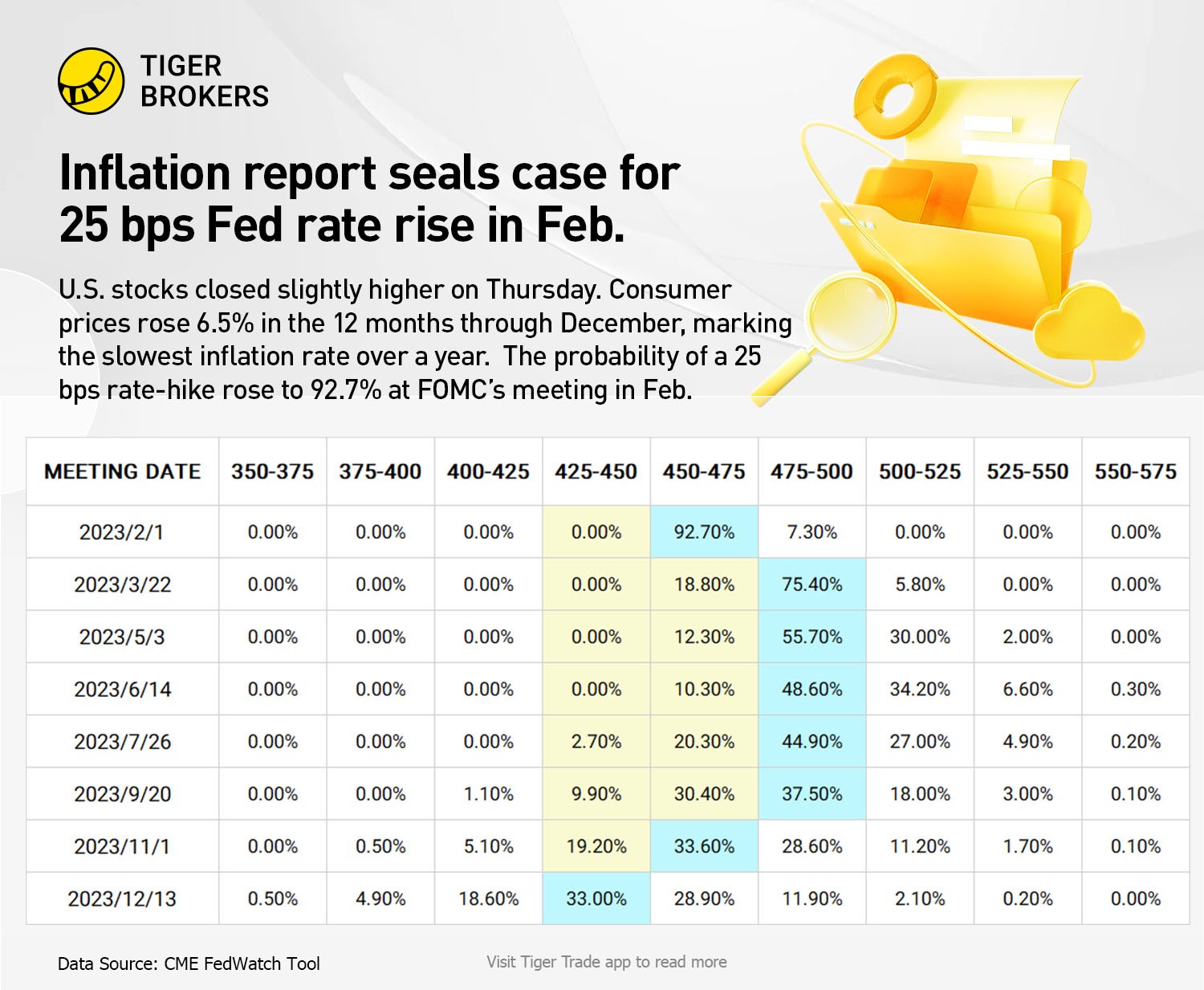The consumer price index, which measures the cost of a broad basket of goods and services, fell 0.1% for the month, in line with the Dow Jones estimate. That equated to the largest month-over-month decrease since April 2020.
Even with the decline, headline CPI rose 6.5% from a year ago, highlighting the persistent burden that rising cost of living has placed on U.S. households. However, that was the smallest annual increase since October 2021.
Inflation eased in Decemberare likely to keep the Fed on track to reduce the size of interest-rate increases to a quarter-percentage-point at its meeting that concludes on Feb. 1.
The improving inflation data suggest officials will strongly consider the smaller increase of a more traditional quarter point, or 25 basis points. It takes time for them tosee the full effects of their policy actions, and they are trying to avoid causing unnecessary declines inemployment and growth.
“In my view, hikes of 25 basis points will be appropriate going forward,” said Philadelphia Fed President Patrick Harkerin remarks Thursday morning.
After holding rates near zero for two years following the onset of the coronavirus pandemic, officialsraised borrowing costsmore aggressively last year than at any time since the early 1980s. They lifted their benchmark federal-funds rate most recently by a half percentage point in December, to a range between 4.25% and 4.5%, following four consecutive increases of 0.75 percentage point.
Fed policy makers want the economy to slow down to cool demand and reduce inflation. Recent data suggest hiring has held steady, but a separate Labor Department report last week indicatedwage growth moderatedat the end of last year. Wage figures are important to the Fed because officials are nervous thatthe labor market’s strength could sustain wage growth that keeps inflation, as measured by their preferred Commerce Department gauge, above their 2% target.
Fed Chair Jerome Powell has recently shifted the focus away from core inflation measures towardan even narrower subset of labor-intensive servicesby excluding prices for food, energy, shelter and goods. Officials believe that category could help show whether labor shortages that have been pushing up wages are passing through to consumer prices.
“We welcome these better inflation reports…but I think we’re realistic about the broader project,” Mr. Powell said last month. Despite progress on goods and housing inflation, “the big story will really be the rest of it, and…that’s going to take time.”

Comments